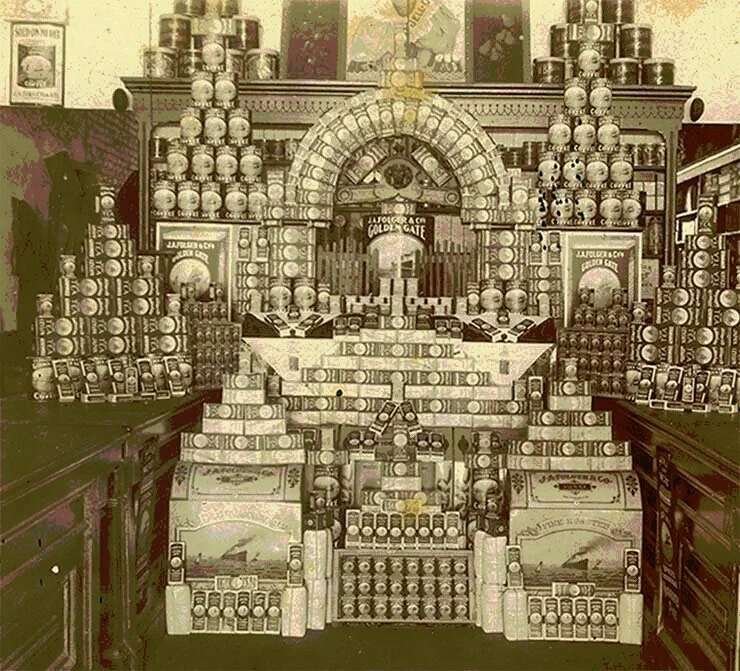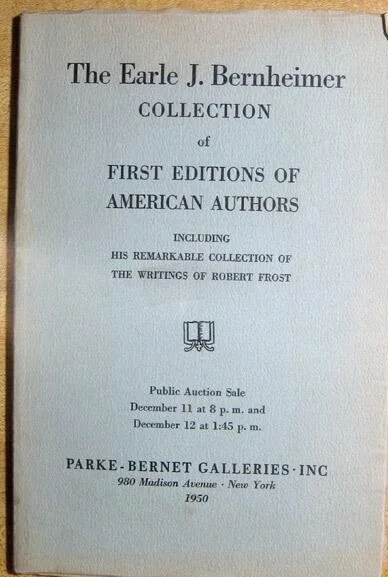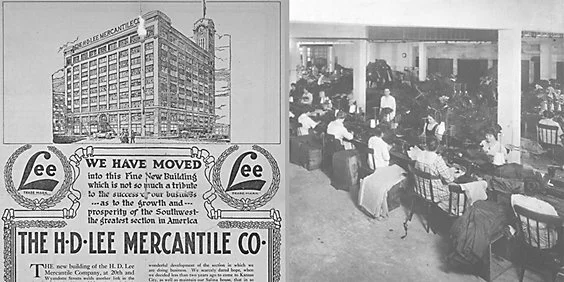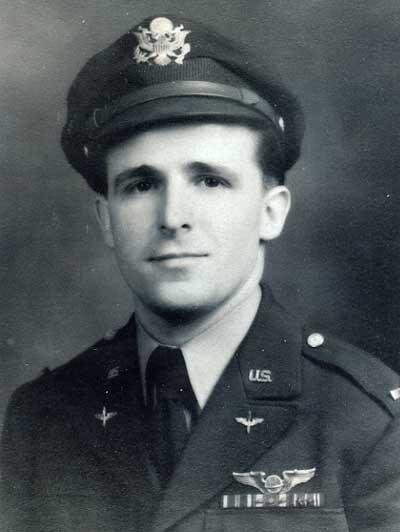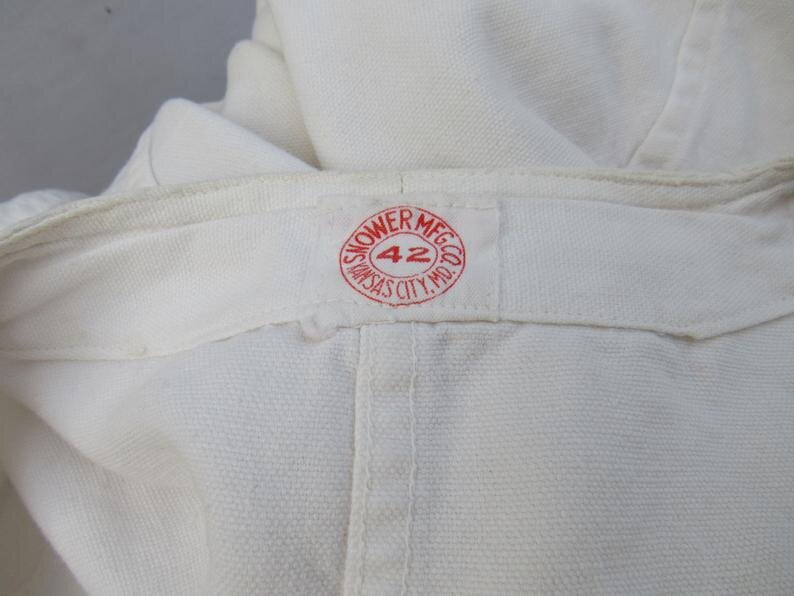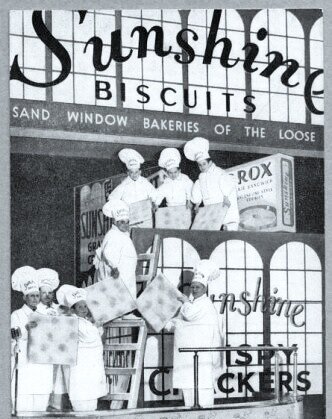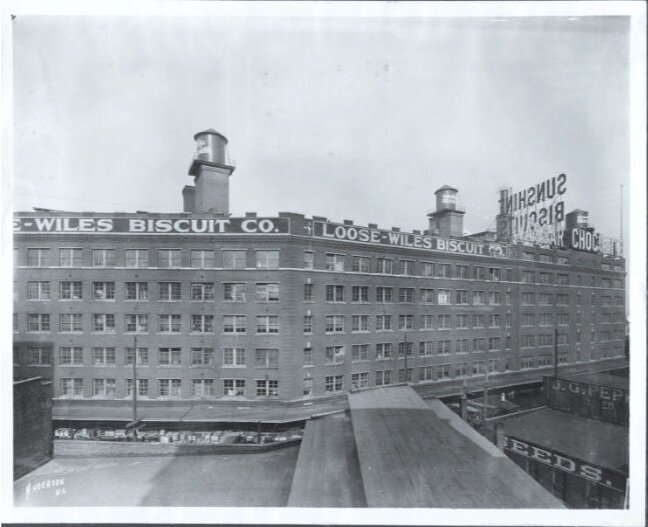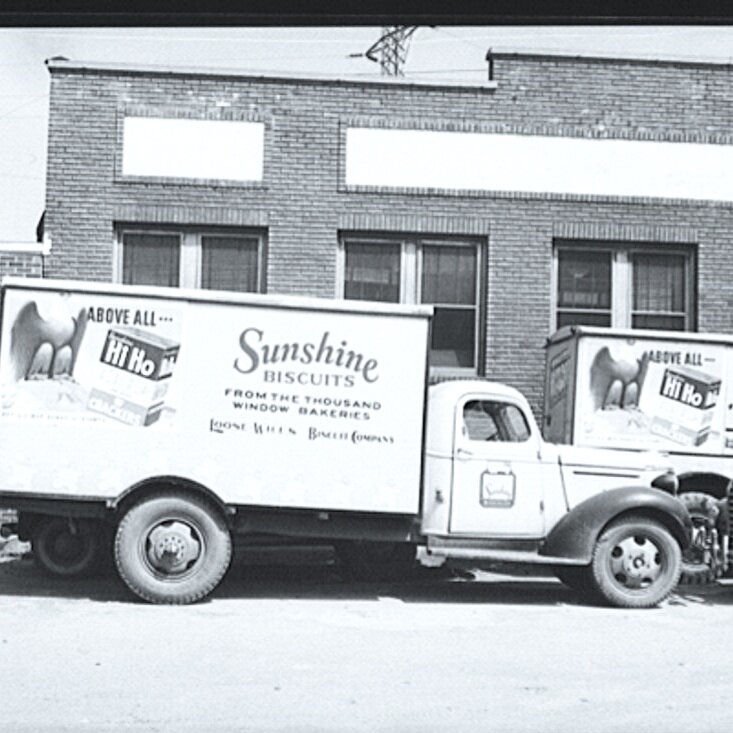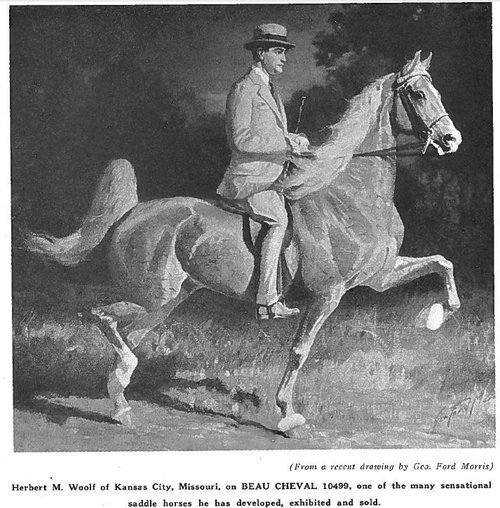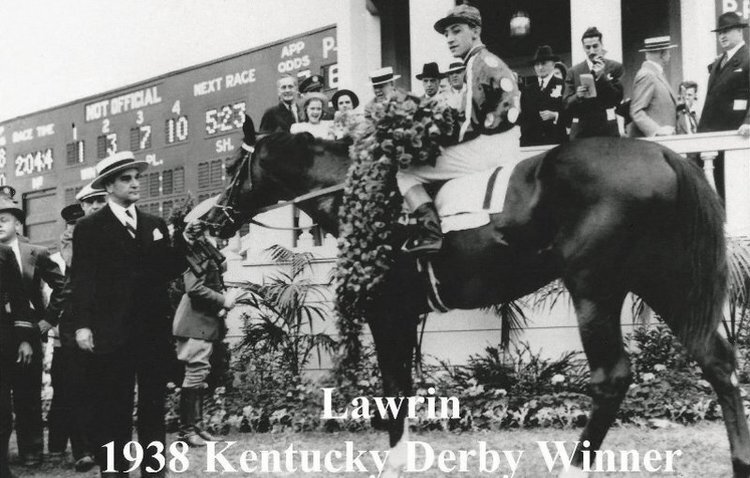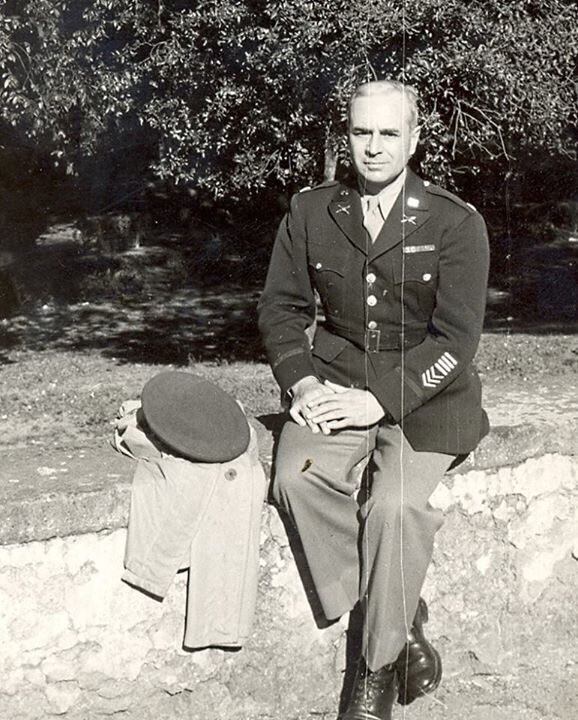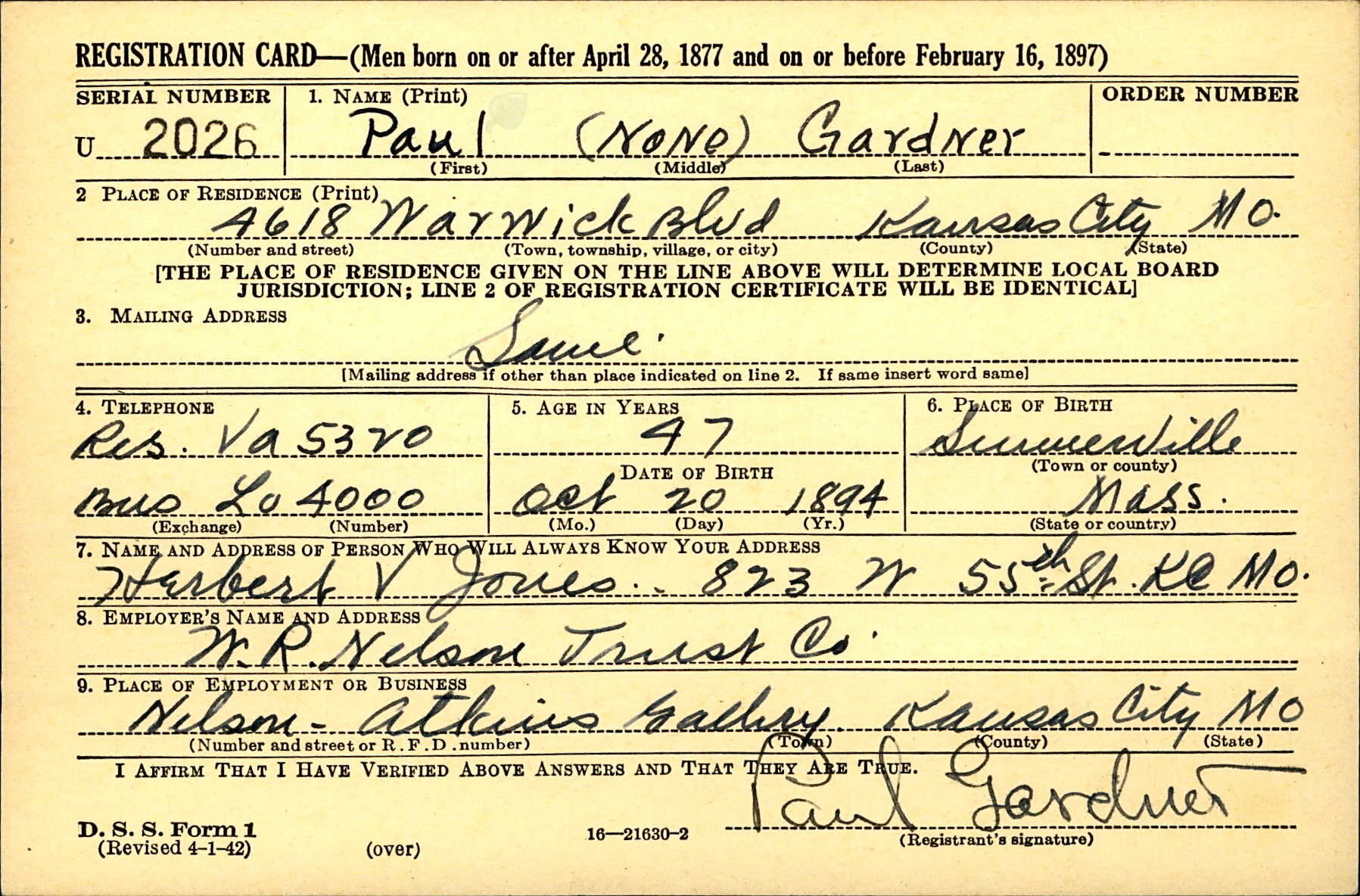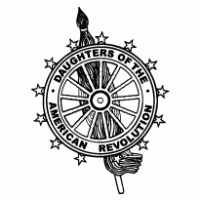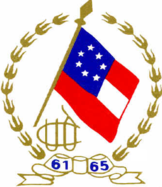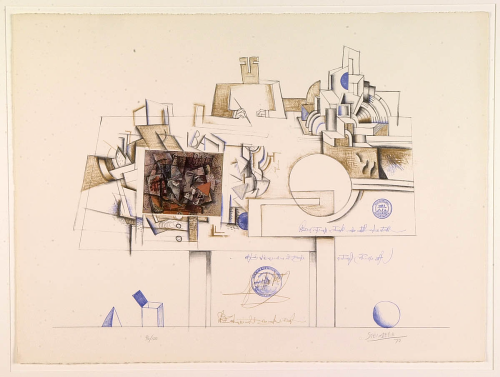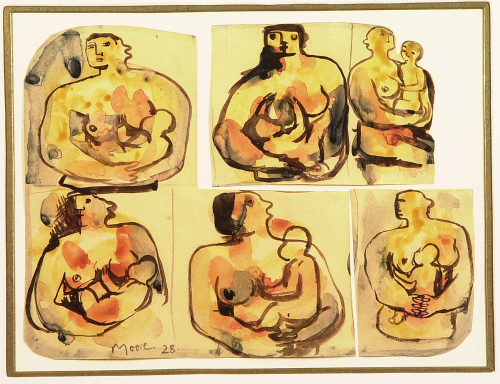The Residents of The Sophian
““The new Sophian Plaza opens today virtually filled with tenants. Forty-five of the forty-six apartments were leased before the initial dinner was served in the Sophian Plaza restaurant last night.””
From day one, The Sophian has been filled with a remarkable and entertaining constellation of people. We provide scores of vignettes of the residents of The Sophian from its opening through the ensuing decades. Many had businesses in the apparel industry, medicine, banking, and in commerce iconic of the Midwest (grain, lumber, cattle). For those who put stock in the Social Register, many, many residents were included. The building was, by design, a place for Jewish people to have a welcoming home, and many Jewish families called The Sophian home.
We provide these vignettes in the order of the decade they moved into the building. For each resident, we add our current state of knowledge of the dates in which they lived in the building. To date, we have concentrated research on the early decades, and not at all since the condominium conversion in 1979-80. More to come!
(See two side stories, links below, on the details of our research methods to locate our neighbors of the past and an apartment-by apartment list of tenants: How We Found All the Sophian Residents and Who Lived in What Apartment? We Can Tell You for One Year- 1943). The ledger in the banner at the top of page, is from Harry Sophian’s records of the building’s rent roll in 1943.
1920s
These folks moved into The Sophian in the 1920s
Frank P and Edith [Shaw] Atha
Example of Atha’s creative coffee displays
(1900)
Folger’s Company History webpages
Edith was a member of the KC Athenaeum, a women’s literary society.
Frank was vice president and general manager of Folger Coffee Company. According to a KC Star 1976 feature of Folgers: "The company has been making coffee in KC since 1908 when Frank P Atha, then a salesman for James A Folger II, proposed that the company build a Midwest roasting plant.” Frank and his sons, Russell, Joseph, and Frank Jr, lead senior management positions with the Folger family for decades.
Per the Folgers Company History website:
“Our company began to grow due to an energetic salesman named Frank P. Atha, who expanded sales outside of California. He got grocers in eastern states to stock Folgers® Coffee, selling it based on its merit and high quality. Frank often assisted grocers with sales, handing out coffee samples from elaborate in-store displays that he designed himself.”
(Best known dates in residence at The Sophian, 1927-28)
John H. and Nellie Atwood
John and Nellie Atwood were born and raised in Massachusetts. A classmate convinced John that Kansas was a great place to establish a law practice, so he and Nellie moved to Leavenworth. He met William Jennings Bryan from Nebraska, they became fast friends, and John became an ardent supporter of Jennings Bryan.
William Jennings Bryan carried on the shoulders of delegates after the speech
By William Robinson Leigh -
McClure's Magazine, April 1900
At Jennings Bryan’s request, John attended the national Democratic convention, as a delegate-at-large. Jennings Bryan had been excluded from a seat in the convention by the national committee. As chair of the credentials committee, John made certain that Jennings Bryan was given a seat and that enough reform delegates were seated to assure Jennings Bryan received the two-thirds majority required by Democratic tradition. It was at this DNC Convention that Jennings Bryan gave his Cross of Gold speech, regarding the gold standard. It is still considered one of the most stirring political speeches ever.
Eventually John and Nellie moved to Kansas City, MO in 1909, joined the law firm, Atwood, Wickersham, Hill & Chilcott, and stayed active in Democratic Party politics. He was renown as a stirring orator, in his own right, and became known as the “silver tongue of Kansas City.
(Best known dates in residence at The Sophian, 1925-32)
J Simeon and May [huntington beeson] Bailey
J Simeon Bailey
Simeon was featured in Notable Kansas Citians. He was president of the Bailey-Reynolds Company, the third largest chandelier house in America, which he started in 1901 with his brother-in-law, at 913-915 Grand Avenue. It has “the finest and most exclusive display of chandeliers, electric lights and gas fixtures between New York and San Francisco.” This was an exciting time in lighting history. In 1925, only half the homes in the US had electric lighting.
According to the profile, Simeon’s “ancestors on both sides belong to the aristocracy of the southland, and his youth was passed amidst southern traditions and memories.”
May's entertaining calendar and travel were frequently covered by the KC Star society pages, probably a dozen or more stories every year.
(Best known dates in residence at The Sophian, 1925-28)
Francis M and Sallye [hill] Bernardin
Francis (Frank) founded and was president of B-R Electric with E.R. Royer. They were on the cutting edge of electrification—erecting telephone systems, developing specialty electric equipment, retail sales of modern appliances. They sold the business to General Electric in 1926. Frank stayed on as advisor.
Frank succeeded JC Nichols as president of the Board of Kansas City Art Institute (1927), and oversaw the acquisition of Vanderslice Hall (August Meyer’s Marburg mansion), one of the crucible events in the development of KCAI. Frank also served on the board of Children’s Mercy Hospital. Listed in Social Register.
(Best known dates in residence at The Sophian, 1925-31)
Earle J. Bernheimer
Auction catalog for Earle Bernheimer’s Collection of first editions
Earle was heir to KC mercantile and real estate family fortune. He turned out to be a miserably unsuccessful husband, married four times. His first marriage to Henrietta Adele Butler, was the toast of the town; they were feted in St. Louis for weeks. His fourth marriage beame salacious national news. His divorce from his third wife was executed in Juarez, Mexico, just in time to marry his fourth wife in Las Vegas. Four days later, they celebrated the birth of his first child. A Missouri court declared the Juarez divorce void, and thus the son was considered illegitimate. That created tidal wave of consequences. Earle’s mother had left a sizeable trust ($750,000) in her will to Menorah Hospital and B’nai Jehudah, but if Earle had “lawful issue,” (a child), the fortune would go to any grandchildren instead. Earle fought to assure the son, Earle Jr, would be deemed lawful issue. The courts agreed, Earle Jr. was the rightful heir. After many rounds of litigation, the final order was issued by the highest court in Missouri.
Earle was an avid book collector, whose collections are available on major art auction sites (e.g., Robert Frost first editions), and owned by Cornell University (Booth Tarkington first editions and related material.)
(Best known dates in residence at The Sophian, 1925-35)
Daniel and Rosa [Ruhl] Cowden
Daniel was one of the four founders of Lee Jeans in Salina, Kansas, lead by Henry David Lee. It started as a dry goods operation (HD Lee Company), until their overalls became wildly popular and the company morphed into a Lee Jeans. They opened manufacturing operations in KC, and moved the headquarters here in 1917.
Both of their sons started their careers with HD Lee Company as well. Salina has historic tours that include the parents and sons’ houses. Daniel was retired by the time they came to live in The Sophian. With his two sons, both of whom worked for Lee Jeans in Salina, they tried to build their own clothing concern. Daniel and Rosa were listed in the Social Register. They lived in Apartment 7D.
(Best known dates in residence at The Sophian, 1925-44)
From Lee Jeans history pages: On March 17, 1917, The H.D. Lee Mercantile Company moved its headquarters from Salina, Kansas to Kansas City, Missouri. Taking advantage of the metro's larger work force and better freight rates, the new 9-story headquarters opened at 20th & Wyandotte.
Fletcher Cowherd
Sr or Jr? It’s not clear.
The Fletcher Cowherd Company (1929)
Courtesy of the Morningside Neighborhood Association
Fletcher Cowherd Sr founded the Fletcher Cowherd Company, a design-build contractor, building homes in Crestwood as JC Nichols was developing Brookside. The Company’s product, “Cowherd-Built” Homes, was promoted as the “The Standard of Value.” Fletcher Jr. worked for the residential development enterprise as well.
It’s not clear which man lived in the Sophian. The City Directories from 1924, 1925, 1926, and 1927 sometimes showed Jr with the phone account, and sometimes that Sr had phone accounts at The Sophian. This is the period when Fletcher Sr was widowed (His first wife Mamie, died in 1903, and he did not marry his second wife, Lucille, until 1935).
During these years, Fletcher Jr. was married and had three small children. The “crowning jewel” of the Cowherd homes was 6140 Morningside Drive, reportedly built for Fletcher Jr. and his family. Jr. died in 1927, of pneumonia.
(Best known dates in residence at The Sophian, 1924-27)
Frank G. and Renee [clements] Crowell
Rendering for Frank G. Crowell Wing, Nelson-Atkins Museum.
John Yeon, architect, Special Collection, University of Oregon
Frank was grain operator (Hall-Baker Grain) and a close political ally of Herbert Hoover. During WWI, he served under Hoover, and was one of four men responsible for the nation’s food supply, US Food Administration Grain Corp.
Frank died in 1936 and left an estate of $1 million (approx. $18 million in today’s dollars). Renee (Hortense Clements) Crowell gave substantial gifts in Frank’s name to University of Kansas, St. Luke’s Hospital, and the Nelson-Atkins Museum (creating the Frank G. Crowell Wing).
(Best known dates in residence at The Sophian, 1925-30)
Benjamin and Ruth [Franklin] Dreyfoos
White & Dreyfoos
give-away tokens
Livestock Inspector, Woodward Oklahoma (Aug 1, 1901)
Benjamin was a director of the Kansas City Stockyards, and of the American Royal Livestock Show. Benjamin owned, with James White, White & Dreyfoos, highly regarded outfitters for stockmen. Their establishment was located across from the KC Stock Exchange. Dreyfoos also owned a 10,000-acre ranch in Texas.
Ruth’s travels were covered regularly by the society pages of KC Star, and The Modern View (St. Louis) and The American Israelite (Cincinnati). Indeed, they were among the first residents to announce in The Modern View, that they were moving into the newly opened Sophian Plaza.
(Best known dates in residence at The Sophian, 1923-40)
Sigmund and Florence [Stern] Harzfeld
Harzfeld’s Parisian, move to its new Petticoat Lane building
A short history of Harzfeld’s clothier: Sig Harzfeld was the founder of the Parisian Cloak House, the first pret a porter clothier in KC, with Ferdinand Siegel, a mentor from his Chicago days. Eventually it was renamed Harzfeld’s. Sig was energetic and innovative in running the store. Sig and Florence lived in The Sophian.
Lester Siegel, Ferdinand’s son, took over management when Sig retired, and Lester’s son took over afterwards. Lester lived in The Sophian too.
Sig and Florence were among the first people to announce in society pages that they were moving into the new Sophian Plaza. The lived here for many years before moving to 63rd Terr (around 1933). After Sig died (1944), Florence moved back to The Sophian. (Sig lived 1867-1944; Florence lived 1869-1952).
Helen Harzfeld, was the widow of Sig’s brother’s (Jacob). The Sophian was such a comfortable home that Helen also took an apartment in the building in 1940 when Jacob died.
Both Sig and Florence Harzfeld were very active within the Jewish community organizations, especially with Menorah Hospital (more on that story to come!).
In her late years, Florence suffered cancer and a stroke. In the few weeks before her death, a nephew pressured her to change her will to bequeath them and their children all the estate (rather than the previous estate plan to give half to family, and half in philanthropic gifts). The drama of the trial of the will contest made front page news for weeks. One day’s testimony included the elevator operator at The Sophian describing how she was brought to the apartment to witness and sign a document of “unknown content” while the nephew guided Florence’s hand to sign as well. The nephew’s attempt was unsuccessful and the original will was probated. The philanthropies included The University of Kansas City (40 percent), Jewish Community Center (15 percent), Menorah Hospital (15 percent), B’nai Jehudah (10 percent), Kansas City Community Fund (10 percent), and Salvation Army (10 percent).
Achelous and Hercules, by Thomas Hart Benton (1910). In the 1940s, the artwork hung in Harzfeld’s department store, downtown Kansas City. Now it is in the collection of the Smithsonian Museum of American Art, Washington DC.
(Best known dates in residence at The Sophian, 1923-33; Florence returned after Sig’s death, est. 1945-52)
William A and Rose Letson
William was president of US Airways, at least as early as 1929, when they handled airmail contracts. The Letsons had a robbery in The Sophian, in which a $1,350 diamond hair pin was stolen (1931). They lived in apartment 6A. William flew 35 combat bombing missions over Europe from July to December 1944 aboard a B-17 (flight formation for Letson’s 381st Bomb Group shown below).
The Letson’s daughter, Elizabeth married Roy Muehlebach, and lived in The Sophian at the same time.
(Best known dates in residence at The Sophian, 1928-34)
Images from the American Air Museum in Britain.
William and Laura [Thornton] Minor
Thornton Minor Hospital
William was a highly reputed physician and surgeon in KC, founded the Thornton-Minor Clinic, and was active in real estate in KC. William (1865-1928) and Laura (1867-1928) lived in the suite next to their daughter Mary and her husband, Thor Sanborn.
William and Laura acquired an expansive estate, “Clifton Farms” on Red Bridge Road. They bequeathed it to Mary, with the caveat that it be given to the City for use as a park when both Mary and Thor died. And so it was. More on that story below, with Thor and Mary Sanborn’s story.
(Best known dates in residence at The Sophian, 1925-28).
Thor and Mary [minor] Sanborn
Thor (1883-1956) was a lumber executive; Mary (1890-1941) was the daughter of physician, William Minor. Thor and Mary lived in next door apartment to Mary’s parents, Dr/Mrs Minor. Thor and Mary eventually left The Sophian to move to Red Bridge, her parents’ farm. Mary passed away in 1941. When Thor died in 1956, the land was deeded to the City and is now Minor Park.
In a 1915 profile of Thor, he was described as a man of “splendid personality.” There are KC Star and KC Times reports of Thor’s travels and escapades as a widower. Apparently, he had multiple trips around the world.
At his death, one newspaper reported that Thor committed suicide in his home, with a gunshot. Neither Kansas City paper (Star nor Times) reported it; that report came from the St. Joseph paper.
(Best known dates in residence at The Sophian, 1925-30).
Franklin Studebaker Riley and Helen [Ridenour] Riley
Franklin was the great-grandson of John Studebaker, who built the first Studebaker wagon. He ran the Studebaker-Riley dealership in KC. The Independent, society paper, (8-14-1920) covered their wedding and honeymoon, reporting that the couple would be touring California in his “beautiful racing car, the Blue Bird.” Their son, Franklin S. Riley Jr., born while they lived in The Sophian, became a KC Star reporter.
(Best known dates in residence at The Sophian, 1924-27)
David and Ruth [Berkowitz] Snower
David was the president of Snower Manufacturing, which produced uniforms and linens. His brother owned a similar concern, called White Goods Manufacturing, as did their uncle in Chicago. David was very active in Jewish community service, and served as a director, Federated Jewish Charities, the Jewish Community Center, and Menorah Hospital. He and Ruth were members of B'nai Jehudah congregation. They lived in Apartment 4C.
(Best known dates in residence at The Sophian, 1923-36).
Walter and Maude [Swanson] Springe
Maude Springe’s fashionable shop
Walter was the manager of Combustion Engineering Company, and Maude owned the Country Club Plaza dress shop, Swanson’s on the Plaza. There are lively tales of her exploits during the Paris fashion week. They lived in Apartment 3A.
(Best known dates in residence at The Sophian, 1926-33).
John and Ella [McKnight] Wiles
John is the founder of Loose-Wiles Biscuit Company, with Jacob Loose. They envisioned a factory which would be filled with sunlight and so they adopted the name SUNSHINE for their products, which eventually became the company name. (Charles Shepard, architect for The Sophian, also designed their KC factory). They grew tremendously, opening the world’s largest “Thousand Window” bakery in NYC. Their products omitted lard and were marketed as kosher. Their big sellers were Hydrox (which preceded Oreos); Animal Crackers; Cheez-Its, Golden Raisin Biscuits, and Vienna Fingers. Sunshine was the third largest cookie baker in the US when it was purchased by Keebler in 1996. It is now owned by the Kellogg Company.
(Best known dates in residence at The Sophian, 1925-30).
Herbert Woolf and his mother, Phoebe [DAvis] Woolf
Herb Woolf was a larger than life kind of guy, whose friendships included Teddy Roosevelt, Harry Truman, William Rockhill Nelson, Randolph Hearst, and Marcus Loew. He became the president of Woolf Brothers, men’s clothier, when the founders, his dad and uncle, passed. The haberdashery produced made-to-measure shirts for some of the “toughest customers” in the West, including Wild Bill Hickok, Bat Masterson, and Buffalo Bill Cody. Herb is credited with transforming the business into “one of the Midwest’s classiest and most successful men’s clothiers.”
Herb never married, and he had his mother live with him over the years. They were apparently very close to the Sophian families. He and his mother lived in Harry Sophian’s first building, the Georgian Court apartments. Like the Harzfelds, they were among the first people to announce their move to The Sophian Plaza, in 1923.
Herbert was an avid fan of raising, riding, and racing horses. He built 320-acre Woolford Farms (present day Prairie Village), where they sired Lawrin, the horse who won the 1938 Kentucky Derby, ridden by jockey Eddie Arcaro. The Woolf family used their winnings from the Triple Crown race to sponsor multiple Jewish charities to help Jews who were fleeing Europe at the onset of World War II.
Herb was a major Kansas City booster, who convinced the Loew’s company to build Midland Theatre. Both Herb and his mother, Phoebe, were listed in the Social Register.
Herb’s sister, Gertrude, also moved into the building when her husband died. More on her story below.
(Best known dates in residence at The Sophian, 1923-33).
1930s
Read about some of the folks moved into The Sophian in the 1930s
Henry and Mary [Edwards] Depping
Henry was a lawyer active in the Republican party. He ran for Missouri Attorney General on the Republican ticket in 1932. He became a lawyer in the Lands Division of the US Department of Justice. Among the cases he handled was enforcement action in 1960 against the City of St Joseph for allowing pure sewage to flow directly into the Missouri River without treatment. The City defended that it did not have the budget to treat the sewage. According to local news reports Depping was a thunderous advocate who exclaimed in court that the City of St. Joseph was “doing a wrong and must find a way out of its peril.” He admonished, it is “absolutely no defense” that the city and its voters have refused to raise the funds for a sewage treatment plant.
(Best known dates in residence at The Sophian, 1934-35).
Rex and Lillian [Schroll] Diveley
Rex was an orthopedic surgeon, who served in Great War (WWI) as part of a major mobilization of Kansas City areas doctors, nurses, and medical professionals who built Base Hospital 28, a 2,500-bed general hospital, intended to support American Expeditionary forces, in Limoges France. In WWII, Diveley was Chief of the Rehabilitation Division in the European Theater. He earned the rank of Colonel, Bronze Star, and the Legion of Merit.
US Army Base Hospital No.28, Limoges, France
In 1923, Rex and Frank Dickson established the renowned Dickson-Diveley Orthopaedic Clinic and shortly thereafter established the orthopaedic department at St. Luke’s Hospital., and a residency to train new orthopaedic surgeons. All three enterprises thrive today. Rex was certified by the American Board of Orthopedic Surgery in 1935. Rex and Frank Dickson each served as presidents of the Academy over their careers.
Rex and Lillian, a designer for a fashion house, married in 1939. When Rex died, Lillian became a philanthropist focused on the medical education of orthopedic surgery, and she endowed faculty chairs, annual lectures, and departmental awards in his name (UMKC, Children’s Mercy) in his name. KU Med houses Rex’s papers.
The Social Register listed their summer residence at Green Mountain Falls, in Colorado. At The Sophian, they lived in Apartment 1C.
(Best known dates in residence at The Sophian, 1938-46).
Paul Gardner
Paul was the inaugural director of William Rockhill Nelson Gallery of Art and Mary Atkins Museum of Fine Arts. He interrupted his PhD studies at Harvard’s Fogg Museum to become assistant to the trustees of the William Rockhill Nelson Foundation. He took charge of finishing the building, installing the collections, and organizing the first programs. The following year the trustees appointed him the first Director.
Paul was also a ballet dancer and decorated veteran of World War I and World War II. In WWII he was stationed in Italy, as Lieutenant Colonel in command of the Arts and Monuments Commission of the U.S. Army in Italy. He was charged to protect cultural resources, including steering Allied bombers clear of churches and other monuments, restoring churches that suffered damage from battle, and finding looted art. He is credited as one of the Army officers that inspired Monuments Men movie (2014, with George Clooney and Matt Damon).
Paul returned to the helm of the museum after the war. He retired in 1953, and spent his summers on his ranch in New Mexico, and his winters in Italy.
(Best known dates in residence at The Sophian, 1933-42).
Gleed and Martha [Nichols] Gaylord
Martha Nichols Gaylord
Publisher, Owner, The Independent
Martha Hall Nichols started her career as an administrative assistant to the editor of The Independent magazine in 1928. By 1939 she owned the magazine, and was its editorial voice until 1983. In 1932, Martha married Gleed Gaylord, who eventually became the magazine’s business manager.
The Independent started as an opposition paper to the Pendergast machine (1899), but later publishers adopted an apolitical editorial style and it became a lifestyle magazine. Martha Gaylord’s editorial outlook: “People are aware of the distress of the world. I think we are starved for bright moments, and The Independent provides just that.” Kellogg Baxter Publishing owned both The Independent and the Social Register. It may come as no surprise that Martha and Gleed Gaylord were listed in the Social Register.
(Best known dates in residence at The Sophian, 1934-41).
Lena [Cohen] Helzberg
Lena (1873-1950) was the widow of Morris Helzberg (1867-1922), the founder of the Helzberg’s Jewelry and the mother of Barnett who took the helm of the store after his father’s death. Barnett grew the store to a major diamond retailer in the Midwest, during the Depression. Among his commercial and marketing innovations, Helzberg’s Jewelry was one of the first to offer shoppers installment plans for their jewelry purchases. Like the Sophian family, the Helzberg’s emigrated from Russia/Poland (Morris was born there, and Lena’s parents were from there).
(Best known dates in residence at The Sophian, 1931).
Ferdinand and Dora [Sympson] Kaths
Ferdinand (1872-1960) was the president of Larabee Mills, founded in Stafford KS, headquartered in Kansas City. The Larabee enterprises were far-reaching. In addition to more than 20 mills across the Midwest, they were involved in lead mining, an iron foundry, charcoal production, had several banks and grain elevators, owned oil and gas refineries, and a cement factory in Mexico.
Given these diverse businesses, it was no surprise that when the Larabee founder died, Fred Kaths, a financier closely connected to the Larabees, was appointed President of Larabee Flouring Mills. In the report of the selection of Kaths, The Northwestern Miller noted that “Kaths, who is president of the Bank of Topeka and widely known among western bankers and financiers, will not be active in the affairs of the company beyond general direction of its financial policy. He was in earlier years associated with Larabee banking interests.”
We have found little information about Dora, although a Washburn University roster of students, lists Dora as a student in the Department of Art. Fred left an estate valued at ¾ of a million dollars. They lived in Apartment 7A in 1943.
(Best known dates in residence at The Sophian, 1938-63).
Gertrude [Woolf] Lighton
Gertrude was the sister of Herb Woolf, bon vivant and owner of Woolf Brothers, the first-class men’s clothier. Herb and their mother shared one apartment in The Sophian and gertrude took another apartment when her husband passed away.
She married David Lichtenstein, of New Orleans. It appears they changed their names to Lighton some time between the 1910 and 1920 Censuses. They had three children, Phoebe, Gertrude, and Alfred. After her husband, David, died in 1929, she moved into The Sophian to be near her mother and brother.
Woolf Brothers was a family business. Gertrude’s husband, David was treasurer. Their son Alfred, became president, after Herb retired.
Gertrude was a shining light in her own right. She was a heralded supporter of the arts, and an artist herself. Among other tributes, she founded a beloved artist studio. In 1929, she turned the Bucket of Blood Saloon and brothel (with “feminine occupants of dubious hospitality and reputation”) into Lighton Studios at 1718 Holly, a studio for many artists. Artists remember the Bohemian charm of the tea-room, romantically dim lighting, Oriental screens, incense burners, appointed with Mrs. Lighton's antique pewters gracing the buffets and wall shelves. The Studio became a center for art exhibitions, book reviews, musicals, literary luncheons, teas, and bridge luncheons. She was a significant donor to the Nelson Atkins Museum.
(Best known dates in residence at The Sophian, 1931-35).
Seated Bather
Drying Herself
Edgar Degas, ca 1885
Mrs Louis M Wilson
We have precious little about Mrs Wilson, not even her first name, and nothing about her spouse. But we do have an entertaining eight-page letter of political intelligence and advice written to Governor Stark on Sophian Plaza letterhead stationary (May 14, 1935). She refers to the governor as “Major.” In the letter, she recounted news from her campaigning for him and voter comments about the ills of the Pendergast machine: “Here is what I find. 9 out of every 10 people to whom you mention the 1936 campaign will say at once Mrs. W, I’ll do anything you ask me to do, but what about the K.C. organization. Well! Then I must close my lips. I have no idea. Our thing of course is certain, you have to have them to win. You see Bennett Clark tried to fight them and how badly his candidate was defeated and also his appointments were turned down. Now you see he has done what Sen. Reed always said – “If you can’t beat them – join them.”
A Letter from Mrs Louis Wilson to Governor Stark
A piece of background info from Wikipedia: The falling out between Stark and Kansas City boss Tom Pendergast following the 1936 election is widely believed to have been the turning point in Pendergast's fall from power. Pendergast held so much sway in Missouri in the 1930s that the governor's mansion had been dubbed "Uncle Tom's Cabin." Stark sought and received Pendergast's support. Pendergast's minions were more corrupt and obvious than usual in the 1936 election. This prompted numerous investigations and Stark turned overtly against Pendergast, who was eventually convicted of income tax evasion.
(Best known dates in residence at The Sophian, 1935).
1940s
This is a selection of residents who moved into The Sophian in the 1940s.
Read their stories.
Jack and Rose [McAllen] Foyle
Rose was a strong supporter of Avila University, and left a sizeable bequest to the school. In thanks and in her honor, Avila named Foyle Hall after Rose and championed Rose as one of their most Notable Alumnae.
Jack was vice president of Gustin Bacon Manufacturing, which produced fiberglass products, including braking systems. Jack has at least two patents for braking systems.
1950 World Series, NY Yankees beat Phillies in four games
Per KC Times 10-6-1950 report: Jack apparently was a baseball enthusiast and he became connected well enough that he never missed a World Series. His streak was so long, that when it appeared he might not be invited to the 1950 championship games—a showdown between the fabled NY Yankees against the Philadelphia Phillies—it became a story worthy of the KC Times. Everyone can breathe easier. Jack was invited last minute by the Lou Perini, owner of the Braves (based in Boston at the time). The Yankees won in four games (October 4-7). That was the Yankee team with Casey Stengel (mgr.), Yogi Berra, Joe DiMaggio, Whitey Ford, Johnny Mize, and Phil Rizzuto (all of whom became Hall of Famers). They lived in Apartment 7C.
(Best known dates in residence at The Sophian, 1943-50).
Ethel B Frith
Ethel was a KU alumna and the daughter of a very wealthy lumber magnate with companies in KS, TX, and ID. Ethel was a shareholder in Panhandle Lumber (Amarillo TX); she was also the co-beneficiary of a $2 million trust, when her father died, sharing the trust income with mother and siblings. She lived in The Sophian at the time of her second marriage to Harvey Newlin.
(Best known dates in residence at The Sophian, 1940).
Lynette [Hakan Glassman] Patz
Benjamin Glassman lived in The Sophian when he married Lynette in 1941, per their marriage license. Lynette continued to live in the Sophian after his passing (1951), and eventually married Louis Patz in 1960. [Hakan was Lynette’s maiden name.] She and Louis continued to live here.
Benjamin Glassman was a sales representative for an electrical appliance manufacturer. Louis Patz was the division manager of National Screen Service Corp. NSS controlled the distribution of the advertising for theatrical releases, from movie trailers to posters etc. He was also a member of the Motion Picture Association. He died a short two years after their wedding.
Lynette, Benjamin, and Louis were all members of B’nai Jehudah. Lynette lived in Apartment 3D.
(Best known dates in residence at The Sophian, 1941-74).
S Herbert and Aurel [murtey] Hare
Herbert and Aurel both went to college in Boston. Aurel studied at Radcliffe College, while Herb was at Harvard’s school of architecture, where he studied landscape planning under the son of the venerable Frederick Law Olmsted. He returned to KC to join his father, Sidney Hare, in his landscape architecture practice. Their firm became the most influential landscape architecture and city planning practice in the Midwest. Projects completed with his father include the Nelson-Atkins Museum of Art, Donald J. Hall Sculpture Park. One of their biggest clients, J. C. Nichols, for whom they designed 2,500 acres of his Mission Hills and Country Club District neighborhoods. Their firm was also hired by lumber baron Robert A. Long to plan the town of Longview, Washington. They had projects in 28 states.
Fort Worth
Botanical Garden
According to the Social Register, Herbert and Aurel were very active in clubs including Rose Society, Society for the Preservation of Wildflowers, and Audubon Society. Herb was a trustee of the Kansas City Art Institute. In the 1940 Census, Aurel listed her work as a practitioner of religion.
They lived in Apartment 8F, on the same floor as Harry and Jane Sophian. They lived there at the time both Harry and Jane died.
(Best known dates in residence at The Sophian, 1943-51).
Helen [Baird] Harzfeld
At the time she lived at The Sophian, Helen just lost her husband, Jacob Harzfeld, the brother of Sig Harzfeld. Jacob had been an attorney, with a commercial law practice with offices in the NY Life Insurance building.
When Jacob died, Helen moved from their home on 64th Street Terrace (around the corner from Sig and Florence), to The Sophian. She knew building well from the time that Sig and Florence had live here. Helen lived in Apartment 8D, across the hall from Harry and Jane Sophian.
(Best known dates in residence at The Sophian, 1940-51).
Faune [Tarter] Leask
The Sophian was home to a few scoundrels as well. Faune Leask was convicted of many counts of fraud, embezzlement, transportation of stolen property, and income tax evasion as a broker from 1946-1952, totaling $414,000. It was one of the largest frauds in KC history at the time. She was sentenced to two years in federal prison.
(News reports noted that she lived in the Sophian at one time, after 1948).
Faune Leask Financial fraud
Covered in newspapers across the country. This excerpt is from [Spoken WA] Spokesman-Review, December 17, 1955
Cyril and Frieda [Markgraf] Prouty
Cyril and Frieda married in Idaho in 1916 and moved to KC for Cyril to become sales manager for Swift & Co, the meat processing company. A newspaper account described Cyril as “a familiar figure in black beret and light raincoat, strolling from his Sophian Plaza address through the Country Club Plaza and on Sunday walks to church services.”
Frieda was an active poet, writing for publication and for competitions and awards. She was a member of the National League of American Pen Women. She was raised in Kansas City and her father was a well-regarded industrial architect, and the president of the American Institute of Architects in KC. They lived in Apartment 3B.
(Best known dates in residence at The Sophian, 1940-69).
opening of the Museum of Modern Art (NYC) exhibit
"Norman Bel Geddes' War Maneuver Models"
Eleanor Grant Rigby
Eleanor G. Rigby represented the leading edge of women serving in the Navy. Her service eventually brought her to Kansas City, to serve in the VFW and to live in The Sophian. Her military career tracks Congress’ reluctance and emerging willingness to see women as capable of high value contribution to the war effort. At the precipice of the US entering World War II, Congress authorized the Navy to form the Naval Reserve for women (WAVES) in July 1942. Two months later, Eleanor was in first class of women commissioned as officers. She became Lieutenant Commander in 1943.
As soon as Congress authorized women to be stationed overseas, Eleanor was front and center and chosen as the first female officer to be sent to Hawaii to serve as director of the naval district, Pearl Harbor (Oct 1944).
After the war, Eleanor was one of the few women allowed to remain in the service (by law, all women service members were be discharged within six months). She was asked to remain in the Navy and was promoted to Commander. Through all her work, she earned the American Campaign Medal, World War II Victory Medal, and a citation for her work at Hunter College.
During her work for the Navy Office of Public Relations, Eleanor was a regular at the meetings of the Ladies Auxiliary of the Veterans of Foreign Wars. When she was ready to retire from service, Eleanor ran for and won the position of National Treasurer. Within a few short weeks, she moved to Kansas City to assume the role (September 10, 1949).
(Best known dates in residence at The Sophian, 1949-53).
Horace and Etta Jewel [Smith] Stephenson
Horace and Etta Jewell were long time residents of The Sophian. Horace was a sales manager for the education publisher, McGraw Hill. He started with the company at its inception and served his whole career with them. Etta was a teacher in Ottawa KS schools.
They lived in Apartment 5F.
(Best known dates in residence at The Sophian, 1943-57, maybe as early as 1937).
Herman and Hortense [Sergeant] Traber
Herman was the executive general agent with the Missouri Pacific Railroad. Hortense was very active in historical groups including Daughters of the American Revolution, Daughters of the Confederacy, and Daughters of 1812. They were listed on the Social Register. They lived in Apartment 5A.
(Best known dates in residence at The Sophian, 1943-69).
Francis “Brick” Wornall, Jr and Mona [McDonald] Wornall
Brick and Mona were perhaps the longest standing tenants in the building, some 36 years, according to our current research.
Brick was an insurance broker with RB Jones, and the grandson of John Bristow Wornall, an early settler of Kansas City, for whom Wornall Road is named. He was a history buff, and was selected as president of the Jackson County Historical Society; president of Native Sons; and was historian for Sons of the Revolution. He also served on Board of Trustees for University of Missouri, his alma mater. News reports remark that he a wonderful and funny raconteur. On a more somber note, he must have been a good friend as well. Newspaper practice in thesse decades was to list the pallbearers at someone’s funeral services. Brick was listed often as a pallbearer when friends pass, several of whom were Sophian neighbors.
Mona was an active civic leader as well, including stints as a board member of the Historical Society. Her activities were covered extensively in the news reports. They were listed in the Social Register and in the Who’s Who of Missouri.
Brick and Mona lived in Apartment 6B.
(Best known dates in residence at The Sophian, 1940-76).
1950s
These neighbors of yore moved into The Sophian in the 1950s.
Ethel Bentley
Ethel started her career as a milliner with Emery Bird & Thayer, moved to New York City to open her own hat shop on Madison Avenue, and was enticed to return to Kansas City by Mrs JC Nichols, who urged her to open a hat shop on the Plaza.
(Best known dates in residence at The Sophian, 1952).
Rheta Berkley Sosland
Rheta lived in The Sophian when she married Louis Sosland. Louis was one of nine children in the Sosland family who built a substantial publishing enterprise and related businesses. The Sosland family have been quite philanthropic, and have given very generously to the Nelson Atkins and WWI museums.
The Rheta Sosland Fund has contributed funds and works of art to the Nelson over many years. The Nelson website shows 42 pieces she has given, many by Saul Steinberg, Max Ernst, as well as pieces by Reuben Nakian, Henry Moore, Francois Boucher, Alexander Archipenko, Joseph Stella, Milton Avery.
(Best known dates in residence at The Sophian, 1952).
The artwork, left to right:
Saul Steinberg, Six Drawing Tables, 1970
Max Ernst, S'egayant S'egratignant a l'objection, 1969
Henry Moore, Six Studies for Sculpture, 1928
Gifts of Mrs. Louis Sosland, to the Nelson Atkins Museum
Joseph and Anna [Flournoy] Connor
Anna was an award-winning gardener for her roses and peonies. Apparently when her health made gardening difficult, she became an avid glass and chinaware collector from England 1800's; Gaudy Dutch from 1820; Pennsylvania Dutch from 1830, and French hand-blown glass paperweights. Her husband, Connor, was a contractor.
(Best known dates in residence at The Sophian, 1954-58).
Cornelius “Neil” and Frances [Helm] Giblin
Kline’s Department Store -
Holiday Princess Fairy
Neil came to Kansas City with a long background in apparel merchandising to take over the Kline’s department store, in 1933. He retired in 1957 and bought a farm in Kansas, called Miles of View. He headed the fund drive for St. Mary’s Hospital.
Per the Kansas City Museum: Kline’s was owned by a Jewish family, who decided against hiring a conventional Santa Claus during December holiday season. Instead they created a Fairy Princess to greet children in white gown, gloves and tiara, thereby creating for Kansas City a beloved non-denominational holiday icon.
(Best known dates in residence at The Sophian, 1957-68).
Henry O and Ruth [Minor] Koppang
Henry was first vice president of Kansas City Federal Reserve, and upon retirement, he was appointed vice chair, Mid Continent National Bank. He also served as a board member of the American Royal. Ruth was an active artist with a studio at their apartment, where she painted portraits and landscapes. Her charitable endeavors were well covered in the KC Times and KC Star, often with photos—many of which show Ruth in some kind of costume regalia. She must have been fun-loving. Ruth was a Trustee of Kansas City Art Institute, a Board member, Children’s Convalescent Center, President of the Auxiliary for Mercy Children’s Cardiac Center; and chair of the Women’s Division of the Philharmonic. She championed fundraising efforts for the United Way.
Henry and Ruth Koppang
The Independent, December 16, 2017 retrospective on the Koppangs
(date of party unknown)
The Independent, a periodical devoted to Kansas City high society, described the couple as “among the most glamorous of the jet-setters” and gushed over their travel from Lido in ’52, visiting Lake Louise in ’54, flying down to Rio in ’56, and in Honolulu in ’62, ’68 and ’78, at least 17 trips to Mexico plus cruises in the Caribbean, around the Greek Isles and through the fjords of Norway.” And of course, they were listed on the Social Register.
They lived on the 7th floor, with view of Country Club Plaza, according to one report on a party they held to watch the Christmas lights.
(Best known dates in residence at The Sophian, 1953-79).
Margaret O’Rielly ‘1918
St Theresa’s College
(Avila University, today)
Margaret C. O’Rielly
Margaret’s father was the former president of Owl Drug company. As a young woman in 1918, she was the first graduate of St. Theresa’s College, the predecessor to Avila University. She was a devoted alumna. In her will, was a bequest to Avila to purchase the 50-acres new campus on Wornall Road. (And by the way, O’Rielly, is the correct spelling of their family name).
(Best known dates in residence at The Sophian, 1952).
Julius and Helen [Rothenberg] Oelsner
Julius was the vice president of Rothenberg & Schloss Cigar Company and Helen was president of the Travelers Aid Society. It was a major bequest by Nathan Schloss formed the starter fund to build Menorah Hospital. Julius and Helen were among the early contributors.
Helen’s community service work was deep: she was a lifetime board member of Menorah Hospital; a trustee for the Jewish Community Center; president of the Sisterhood of B'nai Jehudah, and board member of Missouri Association for Social Welfare. She was frequently honored for her civic and cultural contributions to KC. They were listed in the Social Register.
(Best known dates in residence at The Sophian, 1955-66).
Jack and Katherine [Lorie] Rieger
Jack and Katherine Lorie Rieger were from families prominent in Kansas City and the Jewish community.
Jack’s grandfather, Jacob, emigrated from Goritz, Austria/Hungary in 1877. A decade later, after a stint in Cincinnati, he founded J Rieger & Co Distillery (1887) in West Bottoms, across from the Livestock Exchange. In 1900, Jacob turned over company to son, Alexander (Jack’s dad). Alexander built Rieger Hotel near the new Union Station in 1915. When Prohibition came, the distillery was closed (1919) and the hotel was sold (early 1920s). [It has been revived since, by Ryan Maybee, Dave Pickerell, with Andy Rieger, the great, great, great grandson of Jacob].
The Rieger family moved to banking, and Jack had a career in banking, retiring as vice president of Mercantile Bank & Trust.
Katherine’s father, Dr Alvin Lorie, was a prominent leader of the movement to create a Jewish hospital, and became the first chief of staff for Menorah Hospital, opened in 1931. [Harry’s brother, Abraham Sophian, would become the second chief of staff.] Katherine’s uncle, Jacob Lorie, founded the Jewish Community Center; was president of B’nai Jehudah; and was one of the founding members of the Jewish Anti-Defamation League. He was also a member of the All-Souls Unitarian Church, per his KC Times obituary.
Katherine was a major force in social welfare advocacy, was president of the Missouri Association for Social Welfare, and among other things lead a major study on the need for housing, especially for working women.
Jack’s older brother, Oscar Rieger, has also lived in The Sophian, in the 1940’s (maybe in Apt 8F).
(Best known dates in residence at The Sophian, 1952-78).
J Rieger distillery
Glasses from the original J Rieger Distillery, 1529 Gennessee Street, West Bottoms.
Morris and Eudice Shlensky
Morris was an executive vice president for Katz Drugs (1,500 stores nationally) and very active in community service. He served on the Board of Counselors for Menorah Hospital; Board member for the Home for the Jewish Aged; lead the Jewish Federated Campaign.
(Best known dates in residence at The Sophian, 1953-63).
Lunch with Katz Drugs Executives - 1941
Morris Shlensky sits third from right, next to President Michael H. Katz
Missouri Valley Special Collection, Kansas City Public Library
1960s
The historical neighbors moved into The Sophian in the 1960s.
Nell Snead and Beulah Spilsbury
Beulah graduated from Columbia University, and Parsons School of Design; then she taught design at Temple University, before coming to Kansas City to lead Nelly Don as director of design and promotion. She was listed in Who's Who in American Women. Beulah’s obituary, in 1973, specifically notes that "For 30 years she made her home with Miss Nell Snead, former fashion editor of The Star."
Nell was a celebrated fashion writer and editor for the Kansas City Star. She was a big supporter of UMKC, and the Women's Council created a scholarship fund in her name. Nell was also honored alumna of Barstow School, with Sophian neighbor, Katharine Alves. Nell lived in the Sophian until her passing, 1978.
(Best known dates in residence at The Sophian, 1969-78).
Beulah’s Arrival in Eugene Oregon heralded, 1956

